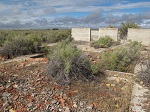| Topaz War Relocation Center | The Topaz War Relocation Center, also known as the Central Utah Relocation Center (Topaz) and briefly as the Abraham Relocation Center, was an American concentration camp which housed Americans of Japanese descent and immigrants who had come to the United States from Japan, called Nikkei. President Franklin Roosevelt signed Executive Order 9066 in February 1942, ordering people of Japanese ancestry to be incarcerated in what were euphemistically called “relocation centers” like Topaz during World War II. Most of the people incarcerated at Topaz came from the Tanforan Assembly Center and previously lived in the San Francisco Bay Area. The camp was opened in September 1942 and closed in October 1945. Since the end of World War II, there has been debate over the terminology used to refer to Topaz and the other camps in which Americans of Japanese ancestry and their immigrant parents were imprisoned by the United States government during the war. Topaz has been referred to as a “relocation camp,” “relocation center,” “internment camp,” and “concentration camp,” and the controversy over which term is the most accurate and appropriate continued throughout the late 1990s. |
